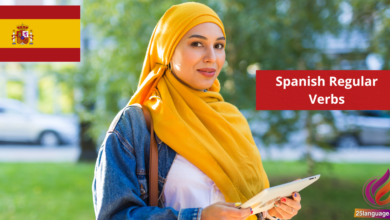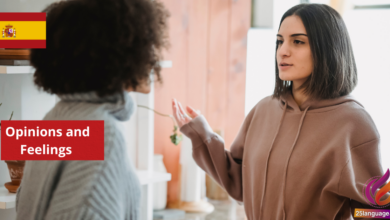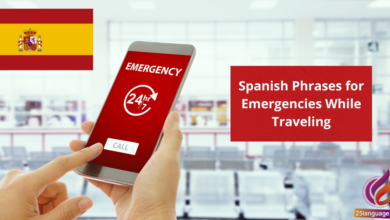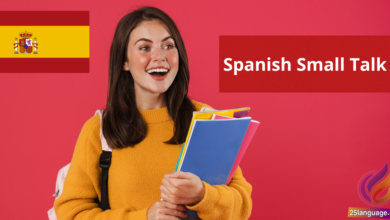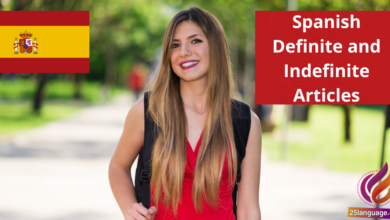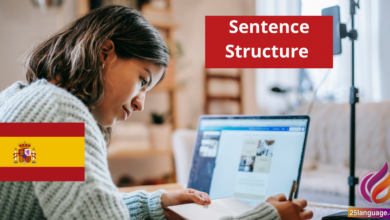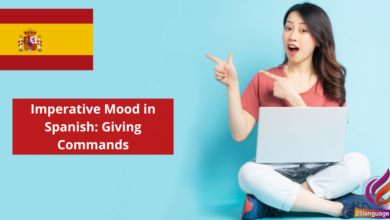Spanish Reflexive Verbs

Imagine waking up and going through your daily routine in Spanish! Reflexive verbs are essential for describing actions we do to ourselves, like getting dressed, brushing our teeth, or preparing for the day. in this lesson, you’ll discover how to use these verbs to express your morning rituals and more. By mastering reflexive verbs, you’ll unlock a new level of fluency and enrich your conversations about daily life in the Spanish-speaking world!
Mastering Spanish Reflexive Verbs in Daily Routines
Reflexive verbs are an essential part of daily routines in Spanish. They indicate actions that the subject performs on themselves. These verbs are typically used with reflexive pronouns, which are the Spanish equivalents of “myself,” “yourself,” “himself,” “herself,” etc. In Spanish, the reflexive pronouns are: me (myself), te (yourself, informal), se (himself, herself, itself, yourself formal), nos (ourselves), and os (yourselves, informal plural). Reflexive verbs are frequently enough used to describe daily routines. For example:
- Yo me despierto a las 7 de la mañana. (I wake up at 7 in the morning.)
- Tú te duchas todos los días. (You shower every day.)
- Ella se maquilla antes de salir. (She puts on makeup before going out.)
To conjugate reflexive verbs,you first need to consider the subject and then remove the reflexive pronoun -se from the verb. The remaining verb is then conjugated according to the subject. For example, using the verb lavarse (to wash oneself):
| Subject | Reflexive Pronoun | Conjugated Verb | Translation |
|---|---|---|---|
| Yo | me | lavo | I wash myself |
| Tú | te | lavas | You wash yourself |
| Él/Ella | se | lava | He/She washes himself/herself |
| Nosotros | nos | lavamos | We wash ourselves |
In daily conversations, using reflexive verbs correctly will enable you to describe your routine, so practice with examples like:
- Nosotros nos vestimos rápidamente. (We get dressed quickly.)
- Ellos se acuestan tarde. (They go to bed late.)
Understanding the Importance of Reflexive Verbs in Everyday Life
Reflexive verbs in Spanish are essential for expressing actions that the subject performs on themselves. These verbs end in “-se” in their infinitive form (e.g., lavarse – to wash oneself). To use a reflexive verb, you must pair it with a reflexive pronoun that corresponds to the subject of the sentence, which often can be one of the following: me (myself), te (yourself), se (himself/herself), nos (ourselves), os (yourselves), and se (themselves). For example, when saying “I wash myself,” you would say Me lavo. Similarly, “She combs her hair” translates to Ella se peina.
Understanding how to use reflexive verbs is crucial as they frequently enough relate to daily routines and personal care. They give learners insight into everyday actions, enhancing conversational fluency. Here are some common reflexive verbs with their meanings:
- despertarse – to wake up
- vestirse – to get dressed
- ducharse – to take a shower
- maquillarse – to put on makeup
- acostarse – to go to bed
| Spanish Example | Rule | English Translation |
|---|---|---|
| Yo me despierto a las 7 de la mañana. | Use reflexive pronoun me for “I” | I wake up at 7 in the morning. |
| Tú te vistes rápidamente. | Use reflexive pronoun te for “you” | You get dressed quickly. |
| Ellos se duchan después de hacer ejercicio. | Use reflexive pronoun se for “they” | They shower after exercising. |
Practical Applications of Reflexive Verbs for Your Daily Activities
Reflexive verbs in Spanish are used to indicate that the subject performs an action on themselves. This is often seen in daily routines and personal care activities. In Spanish,reflexive verbs are accompanied by reflexive pronouns such as me (myself),te (yourself),se (himself/herself/itself),nos (ourselves),and os (yourselves). As a notable example, when describing the action of getting up, you can say Me levanto a las siete de la mañana, which translates to I get up at seven in the morning. Another example is Nos cepillamos los dientes después de comer, meaning We brush our teeth after eating.
Understanding the conjugation of reflexive verbs is crucial. The verb levantarse (to get up) in the present tense is conjugated as follows: yo me levanto, tú te levantas, él/ella/usted se levanta, nosotros/nosotras nos levantamos, vosotros/vosotras os levantáis, and ellos/ellas/ustedes se levantan. Here’s a simple table showing other common reflexive verbs used in daily routines:
| Spanish example | English Translation |
|---|---|
| Me ducho | I take a shower |
| Te vistes | You get dressed |
| Se peina | He/She combs his/her hair |
| Nos relajamos | We relax |
| Os despertáis | you all wake up |
| Se acuestan | They go to bed |
Building Your Vocabulary with Common Reflexive Verbs for Routines
Reflexive verbs in Spanish are essential for describing daily routines and personal actions. these verbs are unique because they indicate that the subject performs an action on itself. To form a reflexive verb, you use a reflexive pronoun that matches the subject in person and number. The reflexive pronouns are: me (myself), te (yourself), se (himself/herself/itself/yourself), nos (ourselves), and os (yourselves, informal plural in Spain). For example, the verb levantarse (to get up) becomes:
- Yo me levanto – I get up
- Tú te levantas – You get up
- Él/Ella/Usted se levanta - He/She/You (formal) gets up
- Nosotros/as nos levantamos - We get up
- Vosotros/as os levantáis – You all (informal, Spain) get up
- Ellos/Ellas/Ustedes se levantan – They/You all (formal) get up
Common reflexive verbs can greatly enhance your vocabulary related to daily activities. Here’s a table showcasing some frequently used reflexive verbs that relate to routines, along with their meanings:
| Spanish Reflexive Verb | English Translation |
|---|---|
| acostarse | to go to bed |
| despertarse | to wake up |
| ducharse | to take a shower |
| vestirse | to get dressed |
| maquillarse | to put on makeup |
| afeitarse | to shave |
Using reflexive verbs allows you to describe your routines more accurately. Utilize them in sentences like: Me despierto a las siete de la mañana (I wake up at seven in the morning) or Nosotros nos duchamos después de hacer ejercicio (We shower after exercising). By practicing these verbs in context, you’ll build a stronger foundation for discussing your daily life in Spanish.
The Conclusion
¡Excelente trabajo, estudiantes! Hemos llegado al final de nuestra lección sobre los verbos reflexivos en español, en especial en el contexto de las rutinas diarias. Hoy hemos explorado cómo estos verbos son esenciales para describir acciones que realizamos sobre nosotros mismos, como “levantarse,” “cepillarse,” y “vestirse.” Recordemos que la clave para usar los verbos reflexivos correctamente radica en reconocer la estructura “me,” “te,” ”se,” “nos,” y “os,” y cómo se combinan con los verbos en el infinitivo.
A medida que continúen su viaje en el aprendizaje del español, les animo a practicar describiendo sus propias rutinas diarias utilizando estos verbos. Pueden hacerlo creando frases simples o incluso llevando un diario en español. Al incorporar estas nuevas estructuras en su vida cotidiana, no solo fortalecerán su dominio del idioma, sino que también disfrutarán de la belleza del español en su uso diario.
Recuerden que la práctica es esencial y que cada pequeño paso cuenta. No duden en hacer preguntas, explorar más sobre los verbos reflexivos y, sobre todo, divertirse mientras aprenden. ¡Sigan adelante y hasta la próxima lección!


